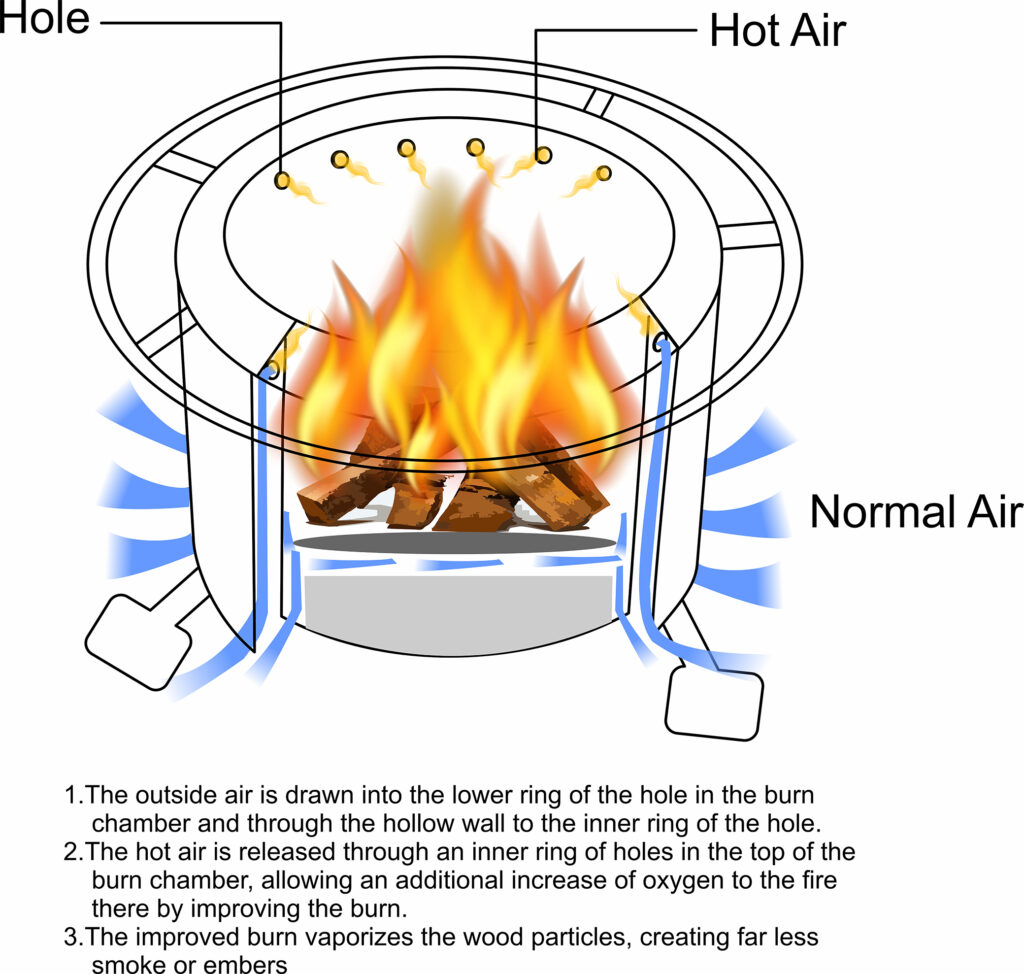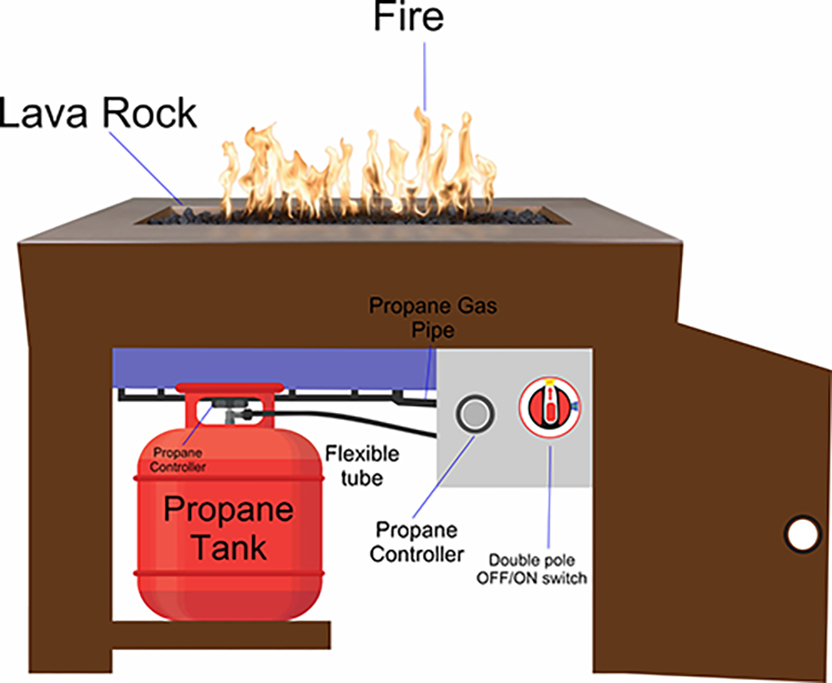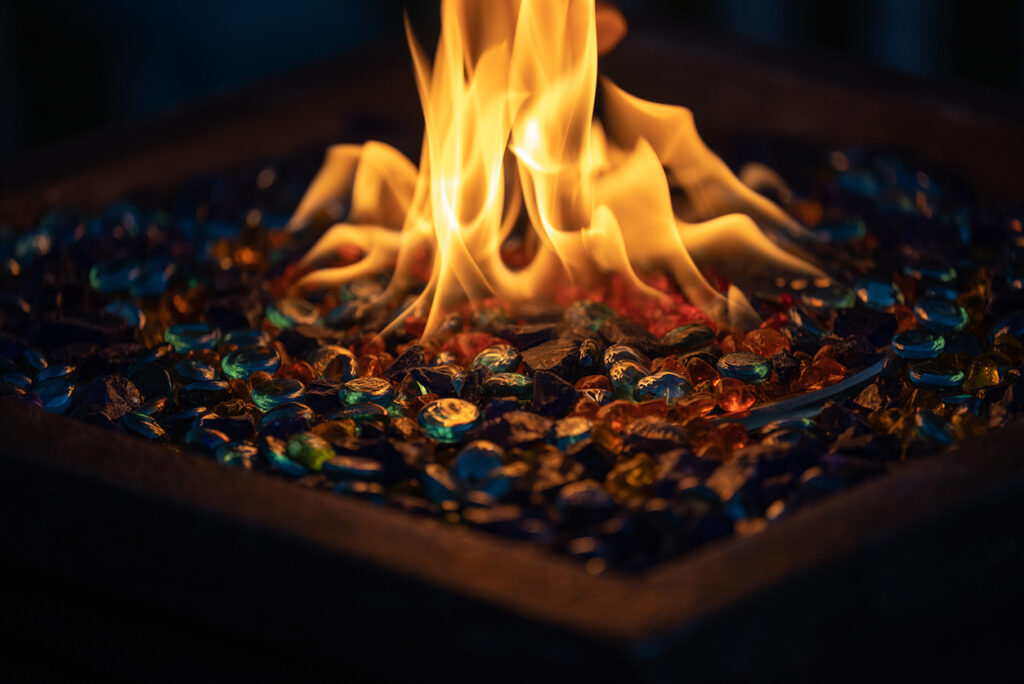The smokeless fire pits sport a double-wall, mid-deflation design. When a fire burns, the walls heat up, and the hot air rises through the gap between the two walls.
The air then exits the wall’s lair through the line of holes around the rim. This compressed, heated oxygen mixes with the smoke and re-burns it. It is the secondary blaze that makes your fire smokeless.
The main air supply enters between the stone and metal rings. The second air supply comes from the double outer walls and exits through holes at the top of the pit.
Hot oxygen enters the top of the pit through small holes, mixes with the smoke, and burns it.

How Does Smokeless Firepit Work
The true advantage is a smokeless fire pit. The air in the pit is pure in all directions, cold air enters the bottom, then warms up to exit near the top of the fire.
We can say that the atmosphere around us gets warmer and most of the smoke is reduced and our fire burns very well, which makes our firepit look even more beautiful. No smoke, no sparks, no embers, no worries, just fun.
Two types of components for making a smokeless fire pit
Triple wall construction
Re-ignite the vents.
Building triple wall
Allow the fire pit to draw air into the enclosure and push the air back through the make-free. Multiple sets free these fire pits to create adequate airflow.
Re-Burn vents
We can say that the re-ignition vent is this secondary component. When hot air and blazes meet, this smoke re-ignites.
Re-burning smoke gives you more heat for a longer period, smokeless fire pits release less smoke into the air.
The Benefits of Using a Smokeless FirePit
Using a smokeless fire pit has many benefits. Smokeless fire pit science reduces smoke, leading to cleaner air and a more comfortable atmosphere.
Safety features prevent accidents, while the fuel efficiency of smokeless fire pits makes them environmentally friendly.
They can be used in different settings and provide all the advantages of a traditional fire pit without the drawbacks of excessive smoke.
Enjoy the warmth, ambiance, and relaxation while minimizing the negative effects of smoke and promoting a safer and eco-friendly experience.

Are Smokeless Fire Pits Safe?
Yes, smokeless fire pits are safe to use. They are designed to reduce the amount of smoke produced, which makes them more enjoyable and healthier to be around.
The reduced smoke also means there is less risk of respiratory irritation or discomfort. Smokeless fire pits often have safety features in place, such as screens or spark arrestors, to prevent sparks or embers from escaping.
It’s still important to follow basic fire safety practices, like keeping a safe distance and supervising children and pets. Overall, smokeless fire pits offer a safer and more pleasant experience compared to traditional fire pits.

Conclusion
If we think about it, the cost of a smokeless fire pit is high. So it also has some advantages, so you can also use good furniture around it.
You will feel that you have paid for these things but you will be very happy inside. You can enjoy the warmth of a smokeless fire pit on a moonlit night.
Smokeless fire pits are simple to carry, and they are the model to carry around your yard because most of them have tires and are easy to carry around. Smokeless fire pits are always valuable.
Frequently Asked Questions:
What is the engineering behind a smokeless fire pit?
Smokeless fire pits typically utilize a double-wall design and efficient airflow systems. This promotes complete combustion, reducing smoke production.
Are smokeless fire pits better?
Smokeless fire pits are often considered better for providing a cleaner, more enjoyable outdoor fire experience with reduced smoke and improved efficiency.
Can you use a smokeless fire pit indoors?
It is not recommended to use a smokeless fire pit indoors due to safety concerns associated with ventilation, emissions, and potential fire hazards. Always use them in well-ventilated outdoor spaces.


everything is all right
thank you
Pingback: Is Having a Bonfire Illegal - LawnsRoot.com
Pingback: What Do You Put in the Bottom of a Firepit and what are the Best Materials? - LawnsRoot.com